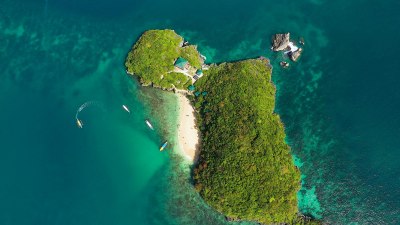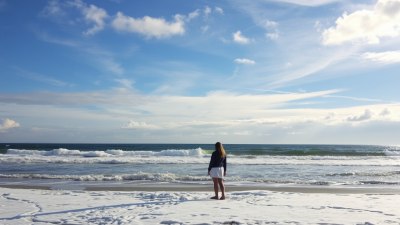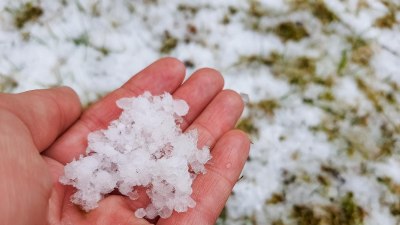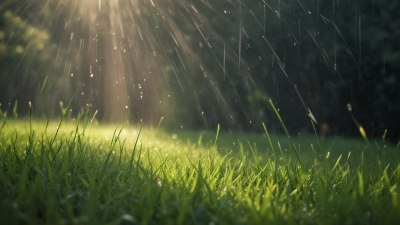How Islands Create Their Own Clouds and Weather Systems
Explore how islands influence local weather and generate unique cloud formations.

Islands, though often small and isolated, have a significant impact on their local climates and weather patterns. This phenomenon occurs due to various factors, including geography, wind patterns, and interaction with surrounding waters. Understanding how islands create their own clouds and weather systems provides insight into the intricate relationship between land and atmosphere. In this article, we will delve into the mechanisms through which islands influence weather, including the formation of clouds, precipitation patterns, and microclimates.
Geographical Influence on Weather
The geographical features of an island, such as its elevation, shape, and surrounding bodies of water, play a crucial role in determining its weather patterns. For example, mountainous islands often trap moist air, leading to orographic lift. As air rises along the slopes of the mountains, it cools, resulting in condensation and cloud formation. This process creates localized weather phenomena, such as rain showers, that may not occur in surrounding areas. Additionally, the unique landscapes found on islands can give rise to distinct microclimates, further contributing to weather variability.
Wind Patterns and Their Role
Wind patterns are vital in the development of clouds and weather systems on islands. Trade winds, which blow from east to west in the tropics, bring moist air to many islands. This moist air frequently encounters obstacles, such as coastal mountains, which can enhance cloud formation and lead to rain. Conversely, some islands may experience dry conditions due to wind patterns that carry air away from them. Understanding how these wind patterns interact with the topography of an island can shed light on the specific weather conditions experienced in that region.
The Effect of Surrounding Waters
The temperature and salinity of surrounding waters also influence the weather and cloud formation on islands. Islands located near warm ocean currents often enjoy higher temperatures and increased humidity, contributing to the development of clouds and precipitation. In contrast, islands surrounded by colder waters may experience cooler temperatures and drier conditions. Additionally, the evaporation of seawater adds moisture to the air, which can facilitate cloud formation and precipitation, especially when combined with prevailing winds.
Humidity and Cloud Formation
Humidity plays a significant role in the formation of clouds and weather systems on islands. When warm, moist air rises, it cools and condenses, forming clouds. The higher the humidity, the more likely it is that clouds will form. Islands with abundant vegetation or those that are frequently subjected to rainfall are often shrouded in clouds due to the high humidity levels they maintain. This moisture not only contributes to cloud formation but also enhances the likelihood of rain, thus creating lush landscapes on many islands.
Microclimates in Island Ecosystems
Microclimates are localized climate conditions that differ from the general climate of an area. Islands, due to their unique geography and vegetation, often exhibit distinct microclimates. For instance, the leeward sides of islands can be significantly drier than windward sides due to the rain shadow effect. The varying temperatures and precipitation levels within these microclimates can create diverse ecosystems, including rainforests, deserts, and wetlands. Understanding these microclimates is essential for studying the biodiversity and ecological dynamics of island environments.
Rain Shadow Effect
The rain shadow effect is a critical concept in understanding how islands manage their weather. When moist air is forced to ascend over a mountain range, it cools and loses its moisture as precipitation on the windward side. As the air descends on the leeward side, it warms up, leading to drier conditions. This effect can create stark contrasts in vegetation and weather, resulting in lush rainforests on one side of an island and arid conditions on the other. Many islands exhibit this phenomenon, showcasing the complex interplay between geography and weather.
Impact on Local Ecosystems
The unique weather systems created by islands have a profound impact on their ecosystems. The availability of moisture, temperature variations, and seasonal weather patterns directly influence the types of vegetation and wildlife found on islands. Some ecosystems, such as tropical rainforests, thrive in the humid environments created by abundant rainfall, while others, like dry shrublands, develop in areas with less moisture. This diversity of ecosystems supports a vast array of flora and fauna, often leading to high levels of endemism—species that are found nowhere else on earth.
Climate Change and Its Effects
Climate change poses significant challenges to island ecosystems and their weather systems. Rising global temperatures can alter precipitation patterns, potentially leading to changes in the frequency and intensity of rainfall. Islands may experience more extreme weather events, such as hurricanes or droughts, which can disrupt the delicate balance of their ecosystems. Additionally, rising sea levels threaten coastal areas, impacting freshwater resources and habitat availability for numerous species. Understanding how islands create their own weather systems is crucial for predicting and mitigating the effects of climate change on these vulnerable environments.
The Role of Human Activity
Human activities, such as urbanization, deforestation, and pollution, can significantly influence the weather and climate of islands. Urban areas can create heat islands, where temperatures are warmer than in surrounding rural areas, affecting local weather conditions. Deforestation can disrupt the natural processes that contribute to cloud formation, leading to altered rainfall patterns. Pollution can also impact air quality and may affect cloud formation and precipitation patterns. Addressing these human impacts is crucial for preserving the natural weather systems of islands and their unique ecosystems.
Future Research Directions
As our understanding of island weather systems evolves, ongoing research is necessary to unravel the complexities of how islands interact with their climates. Studies focused on the microclimates of various islands, the effects of climate change, and the impacts of anthropogenic influences will provide valuable insights into the future of island ecosystems. Furthermore, advancements in technology, such as remote sensing and climate modeling, offer new opportunities to enhance our understanding of island weather dynamics and inform conservation efforts.
Islands are unique ecosystems that play an essential role in generating their own clouds and weather systems. Through their geography, local wind patterns, and interactions with surrounding waters, islands create diverse climates characterized by various precipitation levels and temperature ranges. Understanding how islands function in terms of weather is crucial not only for ecological studies but also for conservation efforts as we face the challenges of climate change. By appreciating the interplay between islands and their weather patterns, we can better protect and preserve these vulnerable environments for future generations.











